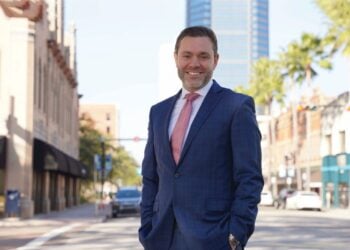Attorney at Law Magazine sat down with the newly appointed pro bono director of Taft Law, Monica A. Fennell to discuss her new role as well as her outlook on pro bono work in the industry.
AALM: For firms without a pro bono director, what’s the first step they can take to begin to establish their pro bono efforts?
MAF: It would be a great start to establish a pro bono committee and to sit down to talk about goals. Then craft a pro bono policy that includes a definition of pro bono, what counts and what doesn’t.
AALM: What are some of the most successful practices you’ve seen in pro bono departments throughout your career?
MAF: Partnering with pro bono and legal aid organizations, as well as with court pro bono programs, is key. They are often closer to the community legal needs and can help design a program to meet those needs. They can provide training and support, which is especially needed if lawyers are going outside their usual area of practice.
AALM: What’s a common misconception lawyers have about pro bono efforts?
MAF: I think it’s not so much that lawyers have misconceptions about pro bono; I think the misconception is that lawyers don’t do pro bono. People think that my job is about convincing lawyers to do pro bono when they don’t want to. In fact, attorneys often come to me and ask how they can best use their legal skills to serve their communities. Especially now, in such an uncertain time, lawyers see the need to give back to our communities suffering under the strains of the pandemic and are gearing up to help with the expected post-pandemic tsunami of cases for those in need.
AALM: COVID has affected most business operations in the last year. How has the pandemic shifted your outlook on the role of the pro bono department?
MAF: Of course COVID has shifted almost all pro bono to remote instead of face-to-face. Although it took a lot of work for legal aid providers and for volunteers to make that shift to virtual, the increase in virtual brief advice clinics has made it easier in some circumstances for lawyers to volunteer. There is no transportation time to the courthouse or to the community center for the clinic, and pro bono questions can be answered from lawyers’ desks.
Free Legal Answers, an online pro bono platform created before the pandemic, have become even more important. Since Free Legal Answers and other online programs already existed when COVID hit, lawyers were able to quickly pivot from in-person pro bono clinics to virtual clinics. Free Legal Answers is run by the American Bar Association and is hosted by local organizations in the majority of states, but many other legal organizations are also offering virtual clinics during the pandemic. There are more people than ever who need help and who are turning to online pro bono clinics.
AALM: Tell us about your time as the executive director of the Indiana Pro Bono Commission. How did that role shape your outlook when you transitioned to working for a firm?
MAF: As director of the Indiana Pro Bono Commission, I worked closely with the courts and with legal aid and pro bono providers locally and nationally. Understanding their roles in the access to justice delivery system helped me to understand how best to partner with each and helped me to understand how pro bono fits into the civil justice ecosystem. The pro bono commission was focused on the people who were in the state court system, and I gained a deeper understanding of the types of matters that are addressed in state court versus federal court. It’s amazing how many more cases are filed in state courts than federal courts. When I transitioned to working for a large law firm, I continued the state court work but was also eager to work on high-impact pro bono projects in the federal system, such as work for prisoner civil rights cases, immigration cases, and veterans pro bono.
AALM: Tell us about your time as a fellow at the U.S. Supreme Court. What was the best lesson you learned?
MAF: I learned so much about the administration of justice as a Supreme Court Fellow, but the most visible daily lesson was the incredible civility and collegiality of the Justices to each other, no matter what they said in their judicial opinions. The year that I was a fellow was the first year that all four fellows were women. So that year Justice Ruth Bader Ginsburg spoke at the Supreme Court Fellows dinner about pioneering women lawyers such as Belva Lockwood, the first woman to be admitted to practice before the U.S. Supreme Court. Justice Ginsburg’s graciousness and recognition of those who have paved the way for others is also a lesson for which I’m grateful.
AALM: Tell us about a particular pro bono matter you’ve been involved with that stands out.
MAF: My family is Jewish, and it was particularly gratifying to help create a pro bono wills clinic for Holocaust survivors.
AALM: Tell us about any mentors you’ve worked with through your career and the best advice they shared with you.
MAF: One of my law professors, Roy Schotland, asked questions in class that led to innovative arguments. When I was writing a law review article, he pushed me not to be satisfied with the easy answer or the obvious argument. Judge Diana LaViolette designed a cutting-edge alternative dispute resolution program for at-risk families in the small town where I live, and her creative approach to addressing legal issues in our community taught me to think systemically. And Indiana Court of Appeals Judge Melissa May taught me how to run a meeting where you actually get things accomplished!








